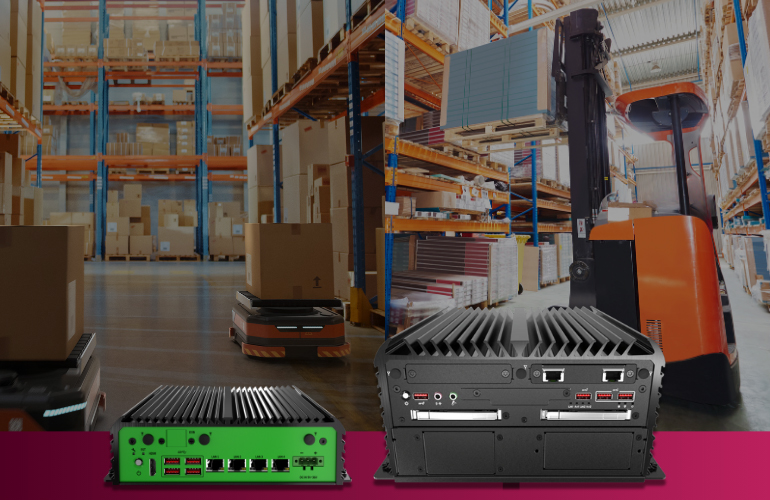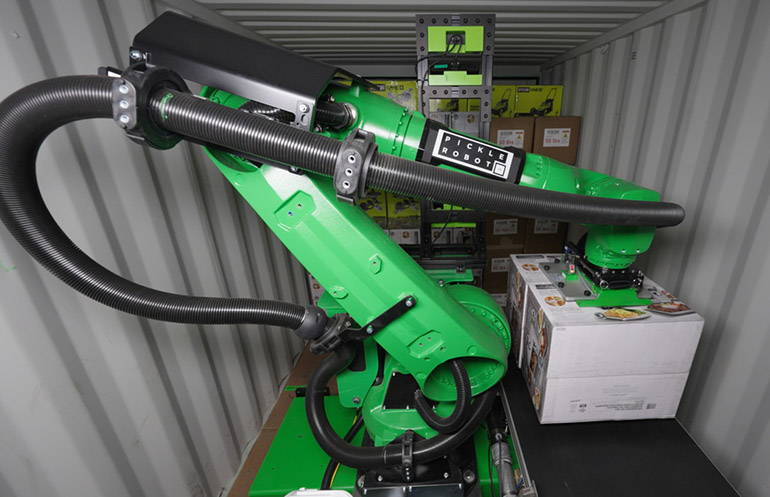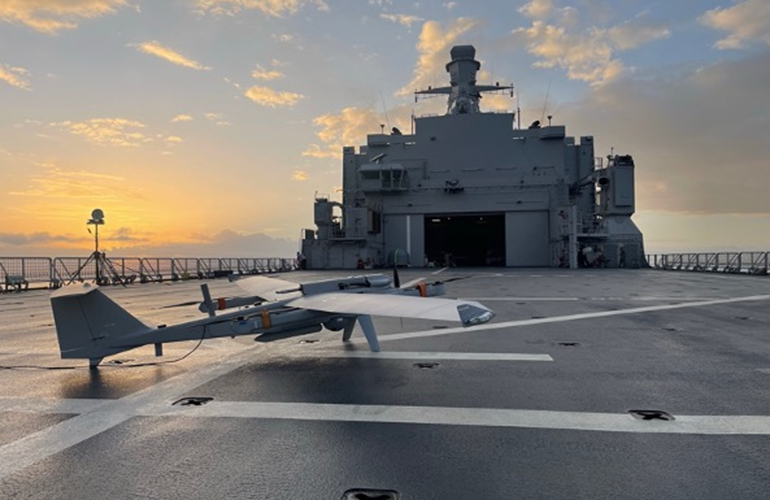
Integrate Real-Time Edge AI Performance for Advanced Robotic Vehicles
By Premio Inc.
Industrial computers play a vital role in effective AGV and AMR deployments. These advanced vehicular robotics are latency-sensitive in nature and cannot afford seconds of delay from traditional cloud computing. By processing edge AI workloads on-premises and closer to the source of data generation, it allows AGV and AMRs to operate in real-time, minimize bandwidth utilization, enhance safety and security, and provide live telematics.
While consumer-grade desktop computers can technically enable these edge AI workloads, it is not suitable in varying warehouse or factory environments. Industrial computers for AGV and AMRs are purpose-built with specialty hardware for harsh environment deployments and expected to have 24/7 operational uptime with no maintenance requirements throughout their lifecycle.

Benefits of Industrial Computers for AGV & AMR Deployments
1. Real-time Edge AI Processing
Traditional cloud computing introduces show-stopping challenges such as latency, reliance on a consistent wireless connection, and bandwidth limitations. AGV and AMR applications are latency-sensitive and require real-time insights for actionable decision-making. By leveraging industrial computers to rapidly edge AI workloads and provide live telematics, it allows AGV and AMRs to operate effectively and seamlessly.
Industrial computers for AGV and AMRs are deployed in-vehicle, right at the source of data generation, to minimize latency and significantly reduce reliance on the cloud. Through a heterogenous computing approach, these industrial computers leverage specialized hardware accelerators to consolidate IoT sensors, enable sensor fusion, and provide rapid data aggregation. Integrating ruggedized edge computing with industrial computers into AGV and AMRs ensures 24/7 operational uptimes and real-time decision-making for enhanced efficiency.
2. AGV and AMR-Centric IoT Connectivity
Industrial computers are specifically designed to provide the most IoT-centric connectivity tailored for advanced robotic deployments. It offers support for both modern and legacy connectors to ensure compatibility across prevalent IoT sensors, cameras, and devices. For example, industrial computers will include LAN and USB ports to support vision cameras and LiDAR sensors. Even the latest GMSL cameras for long-distance, high-bandwidth connectivity are supported through the on-board Fakra connectors.
Additionally, these specialized computers typically have automation or robotic related I/O such as DIO for programmable switches, CAN Bus for real-time vehicle telematics, power ignition management or sensing, and an OOB (out-of-band) module for remote management.
3. Scalable and Flexible Customization
Not all AGV and AMR deployments are designed the same. Each deployment may have varying criteria in processing performance, IoT connectivity, and such. Premio addresses these diverse needs with a 3-tier performance selection ranging from entry-level building blocks to high-performance certified systems. Additionally, a turnkey feature of Premio is the support for EDGEboost I/O technology. By providing EDGEBoost I/O modules, Premio offers the flexibility to meet a wide range of deployment requirements, including M12 connections, PoE support, 5G wireless connectivity, and M.2 performance acceleration.
EDGEBoost I/O Features:
- RJ45 LAN/PoE
- M12 LAN/PoE
- 10GbE RJ45
- USB 3.0
- USB 3.2 (5Gbps) with Screw Lock
- M.2 Slots for 5G Connectivity / NVMe Storage / TPU AI Acceleration
4. Fanless & Cableless Design
Industrial computers are designed with a fanless and cableless architecture to enable key ruggedized features. Fans are a common failure point and are susceptible to single-failure point vulnerability. By utilizing passive cooling through a ruggedized fanless design, the computer’s chassis remains fully enclosed, allowing for a wide operating temperature range, resistance to shock and vibration, and support for a broad power input range. Additionally, the absence of cables eliminates the risk of cable failure and potential unplugging during the computer’s operational lifetime.
- Wide Operating Temperature Range (-25°C to 70°C)
- Shock & Vibration Resistance (MIL-STD-810G Compliance)
- Wide Power Input Range (9~48VDC)
- Power Protection (OCP, OVP, RPP)
- Power Ignition Management
- CAN Bus
5. World Class Certifications (UL Listed, FCC, CE)
Reliability and safety of AGV and autonomous robotics are extremely important for effective operations. System errors and failures result in significant downtime and pose hazards on premises. Edge computing manufacturers, like Premio, recognize the importance of operational reliability and ensure that their industrial computers achieved UL Listed. By reaching FCC, CE, and UL Listed certifications it demonstrates that the industrial computer has undergone thorough testing and validation for safety standards compliance for deployment confidence and peace of mind.
View our real-world deployment case studies:
Autonomous Forklift for Enhanced Intralogistics >>
Middle-Mile Autonomous Delivery Trucks >>
Learn more about:
Premio’s Industrial Computers for AGV and AMR Deployments >>
Learn More
About Premio Inc.
Premio Inc. is a global solutions provider specializing in computing technology from the edge to the cloud. We design and manufacture highly reliable, world-class computing solutions for enterprises with complex, highly specialized requirements for over 35 years. Our engineering specialty and agile manufacturing pushes the technical boundaries in Embedded IoT Computers, Rugged Edge Computers, HMI Displays and HPC Storage Servers.
Sponsored content by Premio Inc.

 3 months ago
52
3 months ago
52








 English (US) ·
English (US) ·